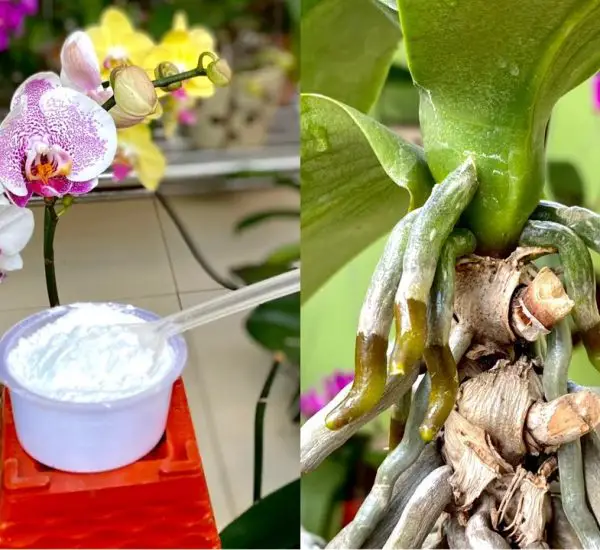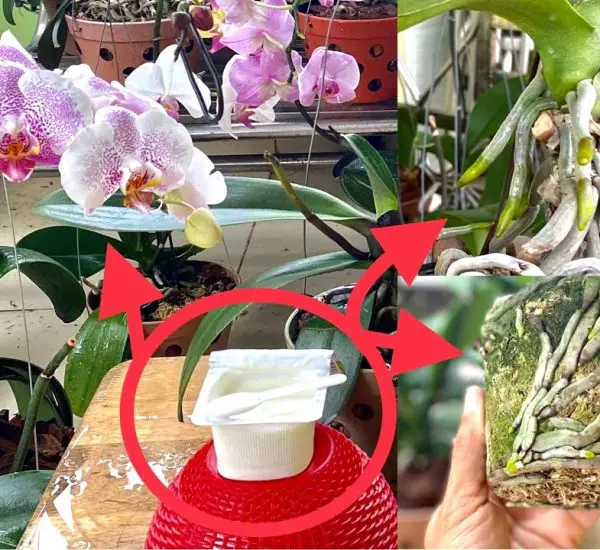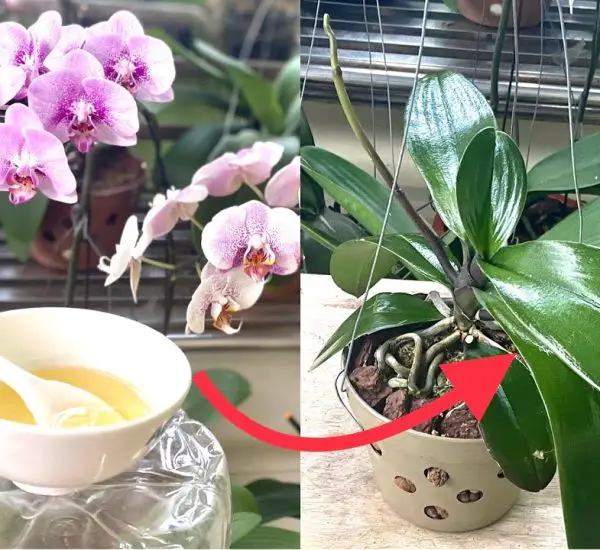Root Rehabilitation with Hydrogen Peroxide:
When faced with orchids suffering from damaged leaves and rotten roots, a transformative approach is essential. Begin by removing yellow leaves and old planting materials. Cut off damaged roots and preserve potential flower branches. Thoroughly wash the roots and leaves to prepare the orchid for a novel planting method. Utilize 3% hydrogen peroxide, undiluted, and spray it generously on the plant. This meticulous disinfection ensures the orchid remains protected and establishes a foundation for robust growth.
Strategic Use of Plastic Cups and Pebbles:
To facilitate the next phase, prepare two plastic cups with drilled holes. After allowing the roots to dry and disinfect for three hours, it’s time to introduce small pebbles into the planting process. Create an environment conducive to rapid root growth by placing gravel at the bottom of the pot. Insert the orchid, securing it with small sticks for stability. Water the potted plants, adding a layer of gravel on top. Submerge the pot partially in water, ensuring the water level doesn’t touch the roots. This strategic use of pebbles promotes moisture retention and aids in the orchid’s rooting process.
Maintaining Moisture and Adaptation:
In the initial stages, mist the leaves and regularly add water to maintain surface moisture. Position the orchid in a cool, well-ventilated area. As the roots start growing, reduce watering frequency. The carefully crafted environment ensures optimal adaptation and encourages the orchid to flourish. After a month of following this method, observe the remarkable transformation – vibrant, greener leaves and robust plant growth. This approach not only saves time but also nurtures orchids to thrive in any environment they are placed in.
Unlocking Growth Potential with Organic Fertilizers:
Once the orchids have developed stronger roots, it’s time to introduce organic fertilizers. This newfound resilience allows the orchids to adapt to different environments. As the roots grow healthier, the orchid becomes more receptive to organic fertilizers, promoting sustained growth and vitality. This method not only revives damaged orchids but sets the stage for long-term health and blooming.
By incorporating small pebbles into the orchid care routine, enthusiasts can witness a remarkable revival of damaged plants. This innovative planting method, coupled with careful disinfection and strategic use of pebbles, creates an environment conducive to rapid root growth and overall orchid well-being.



